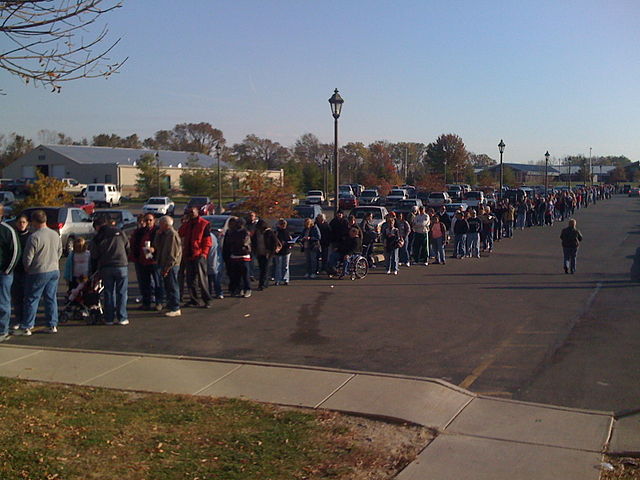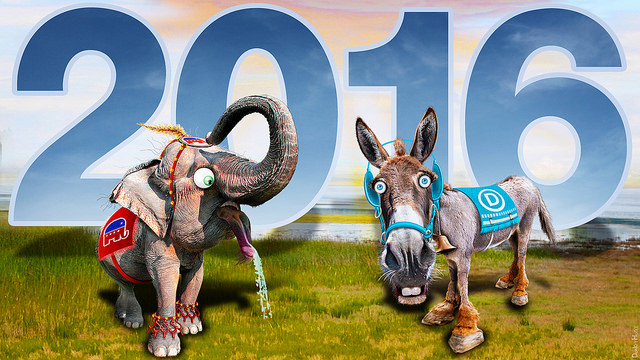That bad weather decreases voter turnout and low turnout favors Republicans have become widely accepted facts in political discourse. This concept fits into various models of voter participation which define the “cost of participation” as the crucial factor. The argument goes that more rain or snow increases deterrent factors such as difficulty traveling to polling stations, discomfort waiting outside in long lines, etc. Democratic voters tend to be less committed participants in the process. For them an increased cost is more likely to tip the scales in favor of staying home.
This analysis was for many years based more on intuition than robust statistics. Those studies that were done were sporadic and limited in scope. However, in 2007 professors from the Universities of Georgia, California, and Pittsburgh collaborated on a more comprehensive project. The researchers analyzed weather and voting data from all presidential elections between 1948 and 2000. They used data for 3,000 counties in the U.S. to determine the impact of precipitation amounts on voting turnout, including differences between parties.
In the end, Gomez, Hansford, and Krause (2007) confirmed the idea that bad weather favors Republican candidates. The worse the weather (more precipitation), the greater the suppression in voter participation, as might be expected. In 1992, more than 600,000 votes may have gone uncast because of bad weather that Election Day.

The effect of precipitation departures from normal might not appear at first glance to be all that impressive. The rainiest county in the 2007 study (Tunica County, MS) saw more than four inches of rain on election day 1972. Such a drenching could easily have led to major logistical disruptions such as flash flooding. However, the reduction in voter turnout was only about 3.8%.
However, even that minor statistical impact can have major consequences in a tight race. In fact, the study suggests that more rain and snow on Election Day 1960 might have led to a Nixon victory instead of a Kennedy presidency. Nixon lost the electoral college vote by 84 votes (303-219) but the national popular vote by just 112,827 votes, less than 0.2%. If the weather had been worse, suppressing Democratic voter turnout, Nixon might have won Delaware, Illinois, Minnesota, Missouri, New Jersey, New Mexico, and Pennsylvania. In that case he would have moved into the White House eight years earlier than he actually did. Conversely, the rain that plagued Florida voters on November 7th, 2000, might have kept just enough Democrat voters at home to ensure a close, contested Bush victory, denying Al Gore the presidency.

For Election Day 2016 we’re not expecting any hurricanes, blizzards, or severe storm outbreaks that would significantly threaten turnout over a wide area. However, the forecast for swing states like Wisconsin and Ohio calls for a chance of rain. In such a closely-contested, meaningful race, could a few harmless rain showers help decide a historic outcome?
For the latest Tuesday forecast details for your polling precinct, rely on the Morecast app!
